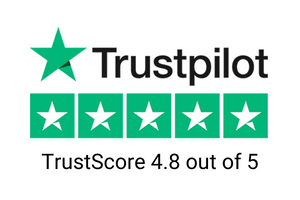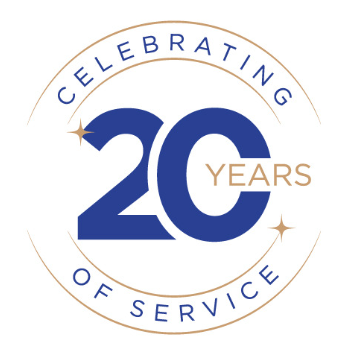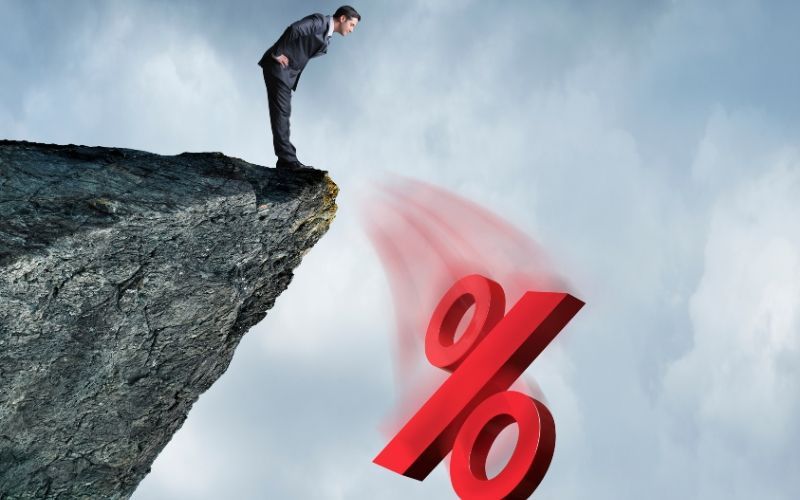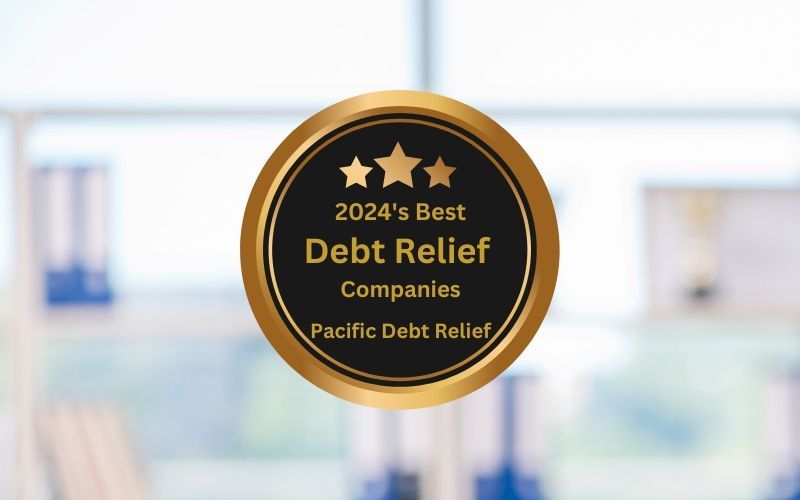Last Updated: March 07, 2025
How Credit Card APRs Are Calculated

Disclaimer: We are not qualified legal or tax professionals and are not giving advice. Always speak with a qualified professional before making any legal or financial decisions.
Understanding how credit card interest works is crucial to managing your finances and avoiding unnecessary charges. Whether you're using your credit card for rewards, building credit, or for convenience, knowing how interest is calculated can save you money.
In this guide, we'll break down the concept of APR (Annual Percentage Rate), how daily interest is calculated, and most importantly, share strategies to minimize or even avoid paying interest on your purchases.
From savvy payment timing to choosing the right card offers, we're here to demystify credit card interest and help you make more informed financial decisions.
Want to skip the article and speak directly to a debt specialist? Click here for a free consultation.
How Do Credit Cards Work?
A credit card is a form of a revolving loan, called a line of credit. The company assigns a credit limit (how much you can borrow in total). The amount you can charge to your credit card is called your credit limit. Every time you use the card, that amount is subtracted from your credit limit.
When you pay back your debt, your credit limit goes back up. You'll also maintain higher credit scores from all the major credit bureaus by paying back your debt on time each month according to various credit scoring models.
Your credit limit is: $5,000
You charge: $1,000
You can charge: $4,000 until you pay off the $1,000
You pay off: $500
You can now charge: $4,500
A secured credit card has a set limit paid by you and placed in a secured account, often a savings account. You can only charge up to that amount. Secured credit cards are a great way to build or rebuild credit scores.
You can use a credit card for purchases, balance transfers with a balance transfer credit card, and cash advances. In exchange for using this line of credit, you are charged an interest rate, called an Annual Percentage Rate (APR).
If you would like to talk to a debt relief expert or one of our balance specialists for more information, click the link below to get started. It's totally free!
How Does APR Work?
APR is fairly complicated and is the reason that most people get into financial trouble. The credit card company assigns an interest rate to you based on your credit worthiness, the Federal Reserve, and other factors. The average ARP as of January 2019 was 15.96%.
APR is calculated or compounded either monthly or daily. For monthly compounding, the interest rate is basically divided by 12. For daily compounding, the APR is divided by either 360 or 365, over 12 billing cycles. However, it’s more complicated and your interest rate is actually higher than your stated interest rate, regardless of how it is compounded.
Let’s say you are charged a regular APR of 12.99%. With monthly compounding, your actual interest rate is 13.79%. With daily compounding, your APR is actually 13.87%.
You can also have a nominal APR and effective APR. A nominal APR is the true interest rate, based on compounding. Your effective APR includes all the fees that you’ll get charged. We’ll go over fees later.
How Does Credit Card Interest Work?
If you pay off your entire balance before the end of the billing cycle, there is no interest charged. If you don’t, the credit card company charges you for the average/actual daily balance times the monthly/daily interest rate and then times the number of days in the billing cycle if compounding daily. Clear as mud, right? Don’t worry, we’ll go over the actual math under the next heading.
The credit card company then adds in fees. The total amount of interest and fees plus a percentage of your purchases is your minimum payment. The credit card company pays itself first out of your payment. Anything left over is applied to your principal. This is why it is so hard, if not impossible, to pay off a credit card through minimum payments.
Credit Card Fees and Variable APRs
Every credit card is different, so you may or may not have these fees.
- Annual fees – charged for the privilege of using the card. Ranges from $19 to $500 per year.
- Balance transfer fees – if you move a balance from one card to another. READ THE FINE PRINT.
- Cash advance fees – if you borrow money against your credit card, or use overdraft protections and convenience checks
- Expedited payment fee – charged for making phone payment
- Finance charge – monthly charge for carrying a balance
- Foreign Transaction fee – charged if you use the card to make a purchase in non-US dollars. This includes purchases over the internet
- Over-the-limit fees – if you charge more than your credit limit
- Late fees – charged for paying late
- Returned check fee – charged if your payment check bounces
- Application fees – a one-time charge for applying for a card
- Limit increase fee – charged when you ask for a higher credit limit
- Replacement fee – if you lose your credit card
- Upfront fee – sometimes charged when opening a new credit card account.
Variable APRs
All of these can increase your credit card’s APR.
- Purchase APR – the interest charge on purchases
- Introductory purchase APR – to attract new customers, a low APR for a limited time
- Promotional APR – special rates offered for a short period of time or on certain balances
- Balance transfer APR – lower APR on transferred balances, often short-term APR
- Introductory balance transfer APR – 0% intro APR rates on balances transfer
- Cash advance APR – charged on cash borrowed against your card
- Penalty APR – often incurred after multiple late payments or exceeding your credit limit
As you can see, having a credit card can be really expensive! Examine your credit statement carefully so you know what you are being charged.
How To Calculate Interest Rate
Now comes the fun stuff! Math! We’ll break this down as simply as possible.
You’ll need to know
- Your average daily balance
- add together all the charges for your billing cycle
- divide by the number of days in billing cycle – usually 30
- Number of days in your billing cycle (on your credit card statement)
- APR – let’s do just the purchase APR to make calculations simple
Now for some numbers…
Your card has an average daily purchase balance of $1,500 and your APR is 15.99%
Now, to figure your daily periodic rate, divide your APR by number of days in the year
0.1599 / 365 = 0.00044
Multiply the daily periodic rate by your average daily balance to find daily interest charge
0.00044 x $1,500 = $0.66
Next, multiply your daily interest charge by the number of days (30) in your billing cycle. This gives you’re your monthly interest charge
$0.66 x 30 = $19.80
Then you need to add in all the fees that your card charges to find the total amount you owe each month
Or you can use our online interest rate calculator!
Just remember that the credit card companies set up terms and conditions to benefit themselves, not you.
Credit Card Interest Rate Trends
Over the past decade, average credit card interest rates have fluctuated but remain near historic highs. According to Federal Reserve data, the average rate across all credit card accounts was 15.87% as of Q4 2022. This is only slightly below the record high of 16.81% in 2019.
Rates had been rising steadily from an average of 12.62% in Q1 2014 before reaching new peaks in 2018-2019. The average rate then declined in 2020 likely due to economic uncertainty and stimulus programs during COVID-19. However, with inflation rampant and the Federal Reserve raising benchmark rates substantially in 2022, credit card APRs have shot upward again.
Most card issuers use variable rate formulas tied to the Prime Rate, so the direction of average credit card rates often mirrors actions by the Federal Reserve. Based on the Fed's current rate-hiking campaign, borrowers should expect the upward trend in rates to continue at least through mid-2023. This will make credit card debt increasingly expensive for those carrying balances month-to-month.
Tips to Get a Lower Interest Rate
If you currently pay high double-digit interest rates on credit card balances, here are some tips to potentially lower your interest costs:
- Ask for a Rate Reduction: Call your credit card company's customer service line and politely ask if they can reduce your interest rate. Especially if you've been a long-time customer with a positive payment history, a 5-minute call could save you thousands in interest.
- Improve your Credit Score: Credit utilization and payment history make up 65% of your FICO or VantageScore credit rating. Keep balances low and make all minimum payments on time. In 6+ months you may qualify for better card offers with lower rates.
- Balance Transfer Card: Apply for a balance transfer credit card offering 0% intro APR for 12-21 months. Move existing balances to pay no interest during the intro period while working to pay down the principal. Evaluate transfer fees carefully.
- Take out a Personal Loan: Unsecured loans can offer lower interest rates depending on your credit rating. This allows you to pay off card balances at a cheaper rate through fixed monthly installment loan payments.
Interest Rate Impacts by Credit Profile
The interest rate you receive on a credit card can differ enormously depending on your credit score and history. Issuers view borrowers with higher scores as lower risk and are more likely to offer cards with attractive rates.
Here are some average purchase APRs that different types of borrowers may see:
- Excellent Credit (720+ score): 11.9% - 15.9%
- Good Credit (690 - 719): 15.9% - 19.75%
- Average Credit (620 - 689): 19.9% - 23.99%
- Poor/Fair Credit (below 620): 25%+
As you can see, having excellent or good credit can save over 10 percentage points on interest costs versus what subprime borrowers pay. This underscores the importance of monitoring your score and maintaining responsible credit habits to keep rates lower. Paying balances off each month remains the best way to avoid interest entirely.
FAQs
Conclusion
While credit cards offer convenience and rewards, their most costly downside lies in high interest rates charged on revolving unpaid balances. Rates have fluctuated between 12-17% APR over the past decade but remain near historic peaks heading into 2023.
Variable rate cards tied to the Prime Rate or LIBOR will see frequent rate adjustments. Maintaining excellent credit and paying statement balances in full each month remains the most surefire way to avoid interest costs.
If you do carry a balance, explore methods to pay off the principal faster like lower-rate balance transfer cards or fixed-payment personal loans. Limit credit card interest erosion of your hard-earned money by staying debt-free whenever possible.
Pacific Debt, Inc
If you’ve found yourself in extreme credit card debt and can’t make the minimum payments. Pacific Debt, Inc. can help you. To be eligible for the Pacific Debt debt settlement program, you must have more than $10,000 in unsecured debt, such as credit card debt or personal loans, and it takes roughly 2 to 4 years to complete.
We are one of the best debt settlement companies that can handle all types of debt, such as credit card debt, medical debt, and any other unsecured debt. We offer debt settlement services similar to those of national debt relief programs. If you're tired of carrying around a heavy debt load, contact Pacific Debt today to explore what debt settlement is and how it can help reduce your total payoff amount.
Once you complete our debt relief program, your financial situation should be improved, except for your FICO score. However, your FICO would most likely have a negative impact regardless because you’d only other option would be bankruptcy, unless of course you can get approved for a loan, but that would only be a temporary fix. You can obtain your free annual credit report once per year.
Pacific Debt, Inc. is accredited with the American Fair Credit Counsel and is an A+ member of the Better Business Bureau. We rate very highly in Top Consumer Reviews, Top Ten Reviews, Consumers Advocate, Consumer Affairs, Trust Pilot, and US News and World Report.
For more information, contact one of our debt specialists today. The initial consultation is free and our debt specialists will give you all your options. Stop making payments today you can’t afford and contact Pacific Debt to negotiate with your creditors for a debt settlement.
Click here to find out what types of credit cards you should have.
RELATED POSTS
- The 5 Main Credit Score Factors You Need To Know (November 23, 2020)
- How To Do A Credit Card Balance Transfer (November 4, 2020)
- The 8 Best Apps for Monitoring Your Credit Score (October 12, 2020)
- What You Should Do If You Experience a Data Breach (September 24, 2020)
- How To Rent An Apartment With Bad Credit (February 7, 2020)
James from Matamoras Pennsylvania Debt Relief ReviewDo you get out of all debts if you declare bankruptcy?
*Disclaimer: Pacific Debt Relief explicitly states that it is not a credit repair organization, and its program does not aim to improve individuals' credit scores. The information provided here is intended solely for educational purposes, aiding consumers in making informed decisions regarding credit and debt matters. The content herein does not constitute legal or financial advice. Pacific Debt Relief strongly advises individuals to seek the counsel of qualified professionals, such as a balance specialist, before undertaking any legal or financial actions.
Reduce Your Credit Card Debt By Up to Half

BBB Reviews | 4.9/5.0 Rating









 Do Not Sell My Personal Information
Do Not Sell My Personal Information